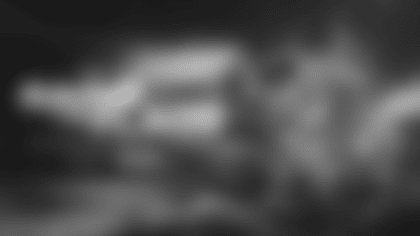The Tampa Bay Buccaneers lost their Week 11 game at San Francisco, 27-14, but they did fight hard in an attempted second-half rally. A Rachaad White one-yard touchdown run following a 41-yard catch by Rakim Jarrett early in the fourth quarter cut into the 49ers' 20-point lead, and the Buccaneers subsequently took three more drives into San Francisco territory, including two into the red zone.
Unfortunately, those three drives came up empty and the Buccaneers couldn't draw any closer before the game's end. That dampened an offensive effort that was relatively productive between the 20s. The Bucs did score touchdowns on two red-zone incursions, including Baker Mayfield's one-yard touchdown pass to Mike Evans in the second quarter, but overall were less efficient in the passing game than usual in that area of the field.
According to NFL Next Gen Stats, Mayfield completed just three of eight passes for 11 yards, one touchdown and one interception in the red zone, for a passer rating of 45.8. His completion percentage of 37.5 was 11.7% less than expected by NGS (-11.7% CPOE). Outside of the red zone, Mayfield completed 26 of his 37 passes (70.3%) for 235 yards and an 87.1 passer rating.
That red zone interception, which deflected off another player and went directly to safety Ji'Ayir Brown in the end zone, was the first one Mayfield has thrown all season. Prior to the San Francisco game, Mayfield had been efficient in the red zone, completing 19 of 40 passes for 107 yards, eight touchdowns and no interceptions. His passer rating in the end zone was 93.8 through nine games but it dropped to 83.7 with that one unproductive outing.
Mayfield was operating under a lot of pressure on those red zone dropbacks. He was pressured on 37.5% of them and had to get rid of the ball at an average of 2.34 seconds after the snap. On his 45 passes overall, he released the ball an average of 2.55 seconds after the snap, and he had a +2.3 CPOE. He was also, unsurprisingly, throwing into tight windows. The percentage of his passes overall that were thrown into tight windows, according to NGS, was 15.6%. In the red zone, that tight-window percentage jumped to 37.5%.
Obviously, the San Francisco offense was more productive than the Bucs' offense on Sunday, and that was true in the red zone, as well. Brock Purdy threw five red zone passes and completed four of them for 14 yards, two touchdowns and no interceptions. His passer rating in that part of the field was 118.8 and he had a +8.3 CPOE.
Most notably, the Buccaneers were unable to get quick pressure on Purdy in that area of the field, giving him time to find an open man. Overall, Purdy released the ball at an average of 3.10 seconds after the snap, which is already a high number. In the red zone, it jumped up to 3.55 seconds after the snap, and only one of his five passes was thrown into a tight window.
Even after Purdy's performance, the Buccaneers' defense has the best red zone touchdown percentage allowed in the NFL, at 34.4%. On this particular afternoon in California, however, the 49ers had clear advantage in that part of the field on both sides of the ball.




































